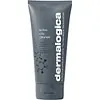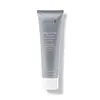What's inside
What's inside
 Key Ingredients
Key Ingredients

 Benefits
Benefits

 Concerns
Concerns

 Ingredients Side-by-side
Ingredients Side-by-side

Water
Skin ConditioningSodium Cocoyl Isethionate
CleansingGlycerin
HumectantCarthamus Tinctorius Seed Oil
MaskingKaolin
AbrasiveGlyceryl Stearate Se
EmulsifyingPEG-100 Stearate
Propanediol
SolventCoconut Acid
CleansingButylene Glycol
HumectantCharcoal Powder
AbrasiveSodium Astrocaryum Murumuruate
EmollientBrassica Oleracea Italica Extract
AstringentBioflavonoids
Skin ConditioningCitrus Grandis Peel Oil
MaskingPalmitic Acid
EmollientSodium Isethionate
CleansingAloe Barbadensis Leaf Extract
EmollientMelaleuca Alternifolia Leaf Oil
AntioxidantCocamidopropyl Betaine
CleansingTocopheryl Acetate
AntioxidantMyristic Acid
CleansingQuartz
AbrasiveStearic Acid
CleansingEthylhexylglycerin
Skin ConditioningCitric Acid
BufferingO-Cymen-5-Ol
AntimicrobialCetearyl Alcohol
EmollientPolysorbate 60
EmulsifyingPentylene Glycol
Skin ConditioningPolyacrylate Crosspolymer-6
Emulsion StabilisingCaprylyl Glycol
EmollientTetrasodium Glutamate Diacetate
Sodium Hydroxide
BufferingDisodium EDTA
Citral
PerfumingLimonene
PerfumingCI 77891
Cosmetic ColorantWater, Sodium Cocoyl Isethionate, Glycerin, Carthamus Tinctorius Seed Oil, Kaolin, Glyceryl Stearate Se, PEG-100 Stearate, Propanediol, Coconut Acid, Butylene Glycol, Charcoal Powder, Sodium Astrocaryum Murumuruate, Brassica Oleracea Italica Extract, Bioflavonoids, Citrus Grandis Peel Oil, Palmitic Acid, Sodium Isethionate, Aloe Barbadensis Leaf Extract, Melaleuca Alternifolia Leaf Oil, Cocamidopropyl Betaine, Tocopheryl Acetate, Myristic Acid, Quartz, Stearic Acid, Ethylhexylglycerin, Citric Acid, O-Cymen-5-Ol, Cetearyl Alcohol, Polysorbate 60, Pentylene Glycol, Polyacrylate Crosspolymer-6, Caprylyl Glycol, Tetrasodium Glutamate Diacetate, Sodium Hydroxide, Disodium EDTA, Citral, Limonene, CI 77891
Ingredients Explained
These ingredients are found in both products.
Ingredients higher up in an ingredient list are typically present in a larger amount.
Charcoal powder comes from grounded charcoal. Charcoal can originate from peat, bamboo, coal, wood, coconut shell, or petroleum.
This ingredient has absorbent properties, making it great at absorbing oil.
Glycerin is already naturally found in your skin. It helps moisturize and protect your skin.
A study from 2016 found glycerin to be more effective as a humectant than AHAs and hyaluronic acid.
As a humectant, it helps the skin stay hydrated by pulling moisture to your skin. The low molecular weight of glycerin allows it to pull moisture into the deeper layers of your skin.
Hydrated skin improves your skin barrier; Your skin barrier helps protect against irritants and bacteria.
Glycerin has also been found to have antimicrobial and antiviral properties. Due to these properties, glycerin is often used in wound and burn treatments.
In cosmetics, glycerin is usually derived from plants such as soybean or palm. However, it can also be sourced from animals, such as tallow or animal fat.
This ingredient is organic, colorless, odorless, and non-toxic.
Glycerin is the name for this ingredient in American English. British English uses Glycerol/Glycerine.
Learn more about Glycerin